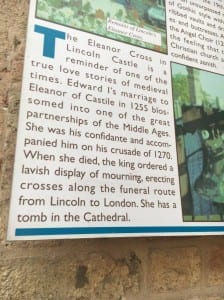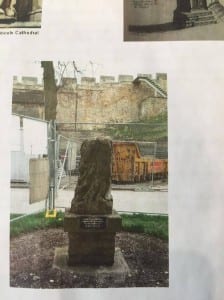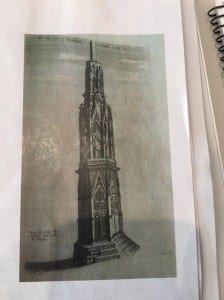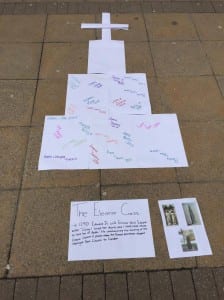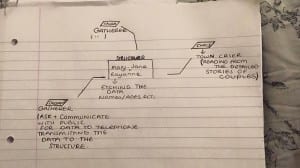Today we had a group meeting in the library. Steve suggested last week that the sites we has chosen last week might not be totally suitable for our performance, because they didn’t have relevant history relating to our performance. Thus, we did some research on “Speakers corner” to find that there wasn’t much history on “Speakers corner” at all, and it had only been called Speakers corner for less than 10 years. Luckily we found information on “The Elanor cross” which completely related to our theme of love in Lincoln. We used this story, did some more in depth research and came up with some really interesting ideas to show Steve, and experiment with later on in the session. We’ve decided to use the Elinor cross as an inspiration for our piece, as we’ll be creating our own version of the cross out of pieces of wood. We have managed to gather a large amount of images and information on different couples (E.G where they met, amount of time they’ve been together and one particular memory that reminds them of Lincoln as a couple), then used this information to place on our replica of the Elinor Cross. We’ve also came up with the idea of using a town crier effect, where one of the group members (preferably someone with a loud voice) shouts the relationships information on the couples we’ve gathered. In the session, we set out into the town center to experiment with our ideas. We typed out the relationship information, for Chris to shout out in the middle of the high street. Rayanne and Mary Jane bought some paper, and created a version of the Elinor Cross and stuck it on floor on the high street. We’ve decided that I will be situated on the high street, asking couples about there relationship (How long they’ve been together, where they met, memories fond to them in Lincoln), writing the information I’ve gathered, and handing it to Mary Jane and Rayanne for them to carve the names into the wooden Elinor cross. I bought some plane rectangular cards, for me to write the information down and hand to Mary Jane and Rayanne. The information I gather will also be used for Chris to use, shouting out the information in the street.
Below is an image of information on the Elinor cross, explaining the history and the love story between Edward I’s and Elinor .
This is the Elinor Cross now. This is what the Elinor cross looked
like when it was first made.
An image of the Elinor cross created out of paper.
Below is a image of the basic structure of how we’ll be set out in Lincolns city centre.
